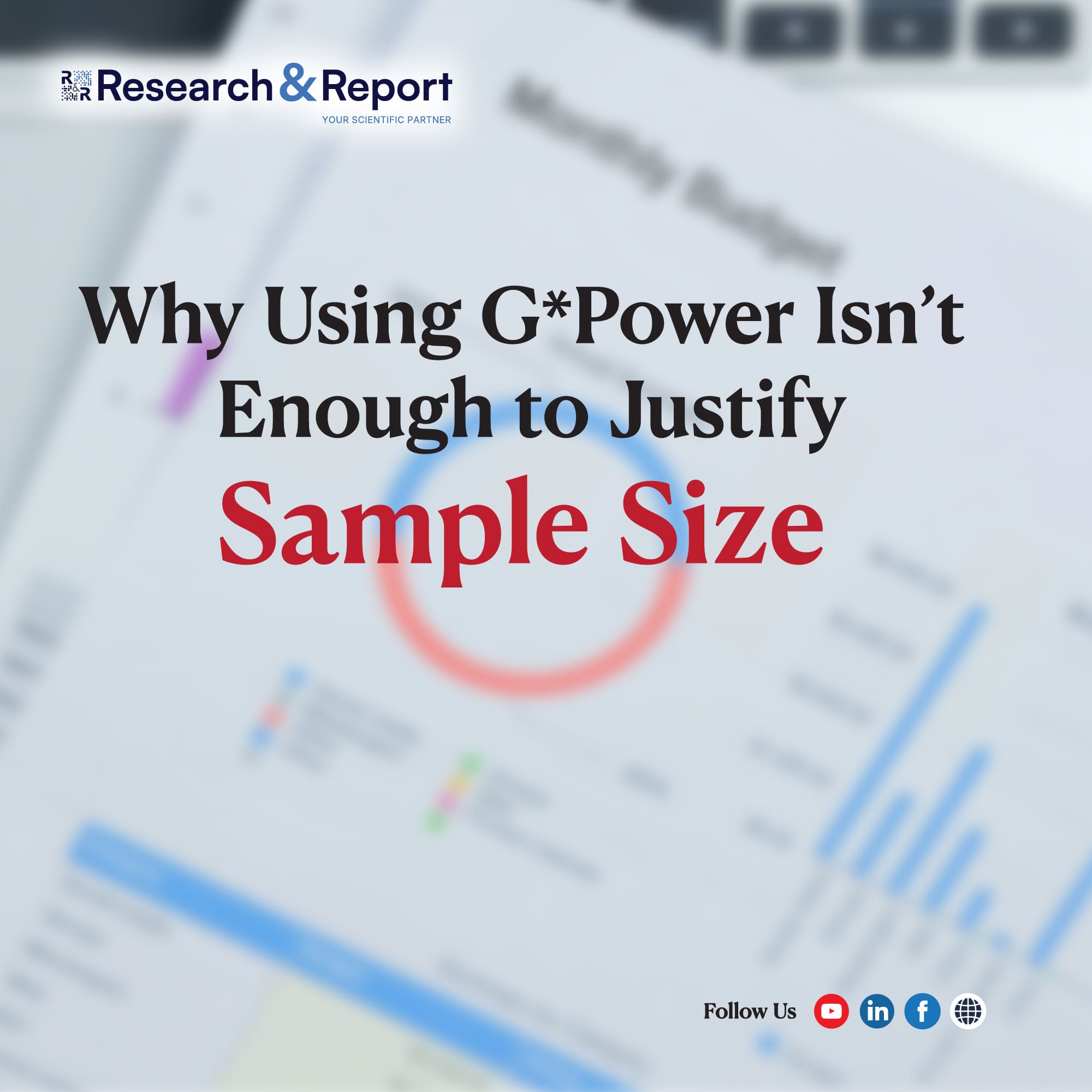In quantitative research, justifying sample size is a fundamental requirement. Yet, one of the most misused tools in this process is G*Power — a free and powerful program that helps estimate sample sizes based on power analysis.
While G*Power is valuable, it’s often misapplied or overly relied upon, leading to flawed research designs, underpowered studies, and misleading conclusions. Many researchers run the tool, plug in default parameters, and report the output as if it were a gold standard. This creates a false sense of rigor.
This article explores why G*Power alone isn’t enough to justify sample size — and what researchers really need to do for valid and publishable studies.
Common Pitfalls in G*Power-Based Sample Size Justification
1. Arbitrary Effect Size Assumptions
G*Power requires users to specify an expected effect size (e.g., small = 0.2, medium = 0.5, large = 0.8 for Cohen’s d). Many researchers choose these default values without empirical or theoretical backing.
Tip: Effect size must be grounded in prior studies, pilot data, or theory — not assumptions.
2. Mismatch Between Power Calculation and Analysis Plan
A frequent error is calculating sample size for a simple t-test or correlation, then conducting multiple regression, SEM, or multi-level models — which require larger samples due to increased model complexity.
Tip: Your power analysis must match the exact statistical test you’ll use.
3. Neglecting Missing Data and Attrition
Most G*Power outputs offer the minimum sample size under perfect conditions. But in real research, there’s always non-response, dropout, or incomplete data.
Tip: Always inflate your sample size estimate by 10–30% to account for data loss.
4. Ignoring Design Effects in Cluster or Longitudinal Designs
G*Power assumes simple random sampling. But if your design involves clusters, nested data, or repeated measures, your sample size must be adjusted for intra-class correlations or design effects.
Tip: Use specialized tools or formulas for complex designs — not just GPower.*
5. Lack of Transparency in Assumptions
Researchers often fail to report:
- The rationale for chosen effect sizes
- Alpha and power levels used (usually 0.05 and 0.80 by default)
- Whether calculations were one-tailed or two-tailed
- Allocation ratios (especially in experimental designs)
This lack of transparency makes it difficult for reviewers and readers to evaluate the rigor of your justification.
What Real Sample Size Justification Should Include
To go beyond G*Power and meet publication standards, your justification must be:
- Conceptually grounded — effect size based on prior evidence
- Design-specific — adjusted for analysis method and complexity
- Data-aware — includes anticipated missingness and dropout
- Transparent — fully reports assumptions and parameters
- Aligned — with your theoretical model and analytical framework
Some studies may also require a priori vs sensitivity vs post hoc power analysis — each serving a different purpose.
Real-World Example
Imagine you’re conducting a multiple linear regression with 6 predictors. Using G*Power’s default medium effect size (f² = 0.15), alpha = 0.05, and power = 0.80, the tool suggests 98 participants.
But:
- You plan to recruit from different cities (introducing nested structure)
- You expect 15% dropout
- Prior literature suggests a smaller effect size (f² = 0.08)
A proper justification would increase your sample to at least 150–170 — not 98.
Want to explore more insights! visit Research & Report blogs
Searching for reliable research consultancy services? Contact us

